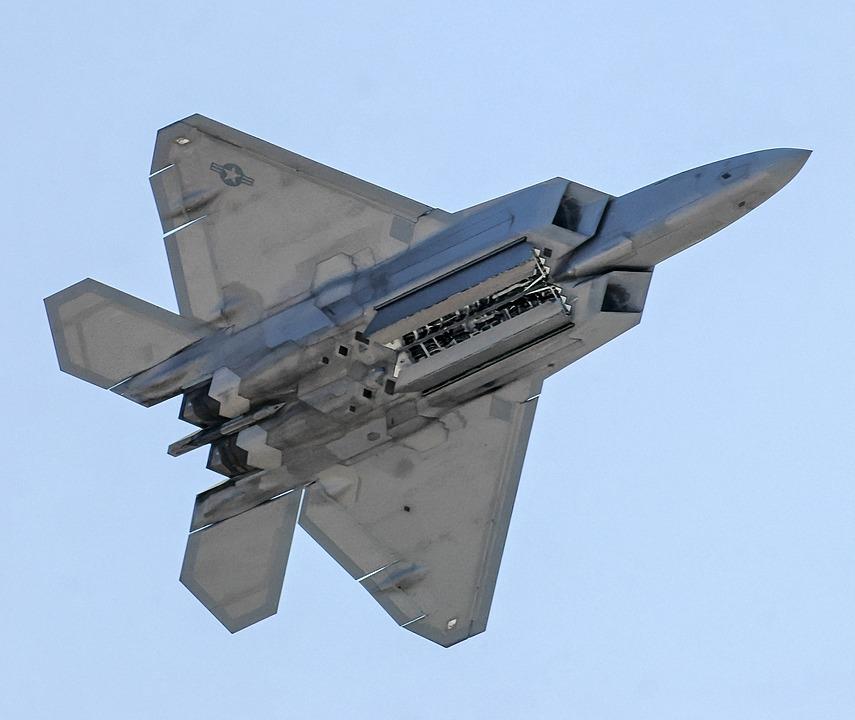The island nation of Taiwan this week unveiled what would be its most advanced fighter jet so far, followed by a nighttime demonstration of the aircraft’s capability. The nighttime demonstration follows the ramped-up military drills China has been conducting close to the island.
Taiwan unveiled its F-16V fighter jet that is capable of being equipped with missiles to reporters this week as it carried out its own military drills that simulate defense against China’s potential invasion.
Air force personnel were seen loading an F-16V fighter jet with an American-provided anti-ship missile in a “combat readiness” drill at an airbase in the eastern Hualien area.
Personnel on the ground were showing reporters how they could rapidly load weapons on the F-16 jets, such as the Boeing Harpoon anti-ship missiles. Six F-16V jets took to the air for nighttime reconnaissance and training missions, with two of the jets armed with missiles, according to the Taiwanese air force.
“In the face of the threat from the Chinese communist forces’ recent military exercises, we have stayed vigilant while establishing the concept of ‘battlefields everywhere and training anytime’ to ensure national security,” said the air force in a statement.
Defense ministry spokesperson Sun Li-fang said that while Taiwan has condemned China’s escalatory actions in recent days, this is a good time for Taiwanese forces to further train and increase their preparedness.
Taiwanese President Tsai Ing-went has also said the democratically-governed island is not seeking to escalate tensions with China.
This comes as Taiwan has also called out China for using the visit of US House Speaker Nancy Pelosi to the island as an excuse to start military drills that would allow them to practice potentially invading the island militarily.
Taiwan and the United States announced Thursday that they agreed to move forward with the US-Taiwan initiative on 21st-Century Trade which would bolster trade and advance common standards in key aspects such as anti-corruption policies and environmental regulations.
Both sides came to an agreement on a mandate for negotiations, with the first round of discussions expected to take place in the coming months.
“We plan to pursue an ambitious schedule for achieving high-standard commitments and meaningful outcomes covering the 11 trade areas in the negotiating mandate that will help build a fairer, more prosperous, and resilient 21st-century economy,” said Deputy US Trade Representative Sarah Bianchi in a statement.



 Najib Razak Jailed 15 More Years in Landmark 1MDB Verdict With Major Political Impact
Najib Razak Jailed 15 More Years in Landmark 1MDB Verdict With Major Political Impact  Australia Orders Independent Review After Bondi Mass Shooting, Albanese Resists Royal Commission Calls
Australia Orders Independent Review After Bondi Mass Shooting, Albanese Resists Royal Commission Calls  Japan Approves Record ¥122.3 Trillion Budget as Takaichi Seeks Fiscal Balance
Japan Approves Record ¥122.3 Trillion Budget as Takaichi Seeks Fiscal Balance  Argentina Congress Approves 2026 Budget Under Milei, Marking First Legislative Passage Since 2023
Argentina Congress Approves 2026 Budget Under Milei, Marking First Legislative Passage Since 2023  Zelenskiy and Trump Meet in Florida as Ukraine Peace Talks Face Major Hurdles
Zelenskiy and Trump Meet in Florida as Ukraine Peace Talks Face Major Hurdles  Kosovo Heads to Early Parliamentary Election Amid Prolonged Political Deadlock
Kosovo Heads to Early Parliamentary Election Amid Prolonged Political Deadlock  Thailand-Cambodia Ceasefire Holds After Deadly Border Clashes
Thailand-Cambodia Ceasefire Holds After Deadly Border Clashes  South Korea Prosecutor Alleges Former First Lady Kim Keon Hee Abused Power for Bribes
South Korea Prosecutor Alleges Former First Lady Kim Keon Hee Abused Power for Bribes  Trump–Netanyahu Talks Aim to Revive Gaza Ceasefire and Address Iran, Hezbollah Tensions
Trump–Netanyahu Talks Aim to Revive Gaza Ceasefire and Address Iran, Hezbollah Tensions  Israel Recognizes Somaliland as Independent State, Sparking Regional and Global Reactions
Israel Recognizes Somaliland as Independent State, Sparking Regional and Global Reactions  Kim Jong Un Signals Continued Missile Development as North Korea Plans Five-Year Military Modernization
Kim Jong Un Signals Continued Missile Development as North Korea Plans Five-Year Military Modernization  California Drops Lawsuit Over Federal Funding Cuts to High-Speed Rail Project
California Drops Lawsuit Over Federal Funding Cuts to High-Speed Rail Project  Canada Announces $2.5 Billion Economic Aid Package to Support Ukraine’s Financial Stability
Canada Announces $2.5 Billion Economic Aid Package to Support Ukraine’s Financial Stability  US Airstrikes Target Islamic State Militants in Northwest Nigeria Amid Rising Security Concerns
US Airstrikes Target Islamic State Militants in Northwest Nigeria Amid Rising Security Concerns  Zelenskiy to Meet Trump to Advance Ukraine Peace Talks and Security Guarantees
Zelenskiy to Meet Trump to Advance Ukraine Peace Talks and Security Guarantees  Kim Jong Un Oversees Strategic Cruise Missile Launch to Reinforce North Korea’s Nuclear Deterrence
Kim Jong Un Oversees Strategic Cruise Missile Launch to Reinforce North Korea’s Nuclear Deterrence  FBI Surges Resources to Minnesota Amid Fraud Investigations Linked to Somali Community
FBI Surges Resources to Minnesota Amid Fraud Investigations Linked to Somali Community 





























